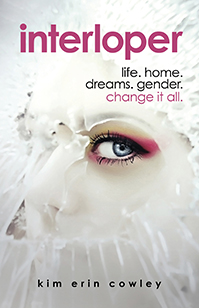I enjoyed reading the tweets from the one-day conference in Chicago the other day, so I thought I’d summarise just a few of them and share them here. You can see the full range on Twitter at #tocchicago
Children’s Books
How to handle the friction between children’s ebooks and the desire to reduce screen time?
For many children, picture books are their first introduction to art.
Re childrens ebooks: what’s useful? What’s a gimmick? Engaging without distracting is the tricky part
What helps readers understand? What is engaging and motivating? What disrupts learning? Good questions generally, not just for children’s books.
Poetry
http://Pf.org Mobile poetry app: built to target folks standing in line. Works in single servings, which causes more poems to be accessed. Includes a fun “spin” browsing feature + mood categories. Has increased exposure for poetry foundation. Reach up 300% while overall engagement has gone down.
Repackaging existing content helps expose it to new audiences. Context may be just as important as content.
Uses of and representations of poetry online is the nexus of many online issues: Digital formatting can play havoc on poetry, where formatting is everything.
poetry will continue to have to compete agains Angry Birds & Pinterest but it will also thrive
Maybe the http://pf.org data suggests that print is the best home for poetry. Is that too radical? Hmm.
Maybe not: Catherine Halley’s talk got me to give poetry a chance via Poetry Foundation’s app http://www.poetryfoundation.org/mobile/
The paradox of attention span: should lead toward shorter content, but poetry often requires more attention & time than prose
Crowd Publishing
Distance.cc, a quarterly journal devoted to long essays about design. Funded by Kickstarter.
First Kickstarter effort by @nickd: cadence.cc, a book on design. Sold out print run last year, still available as eBook. “my book wasn’t published by me, it was published by my audience.”
Readers are out there but you have to meet them on their terms on their devices.
“The more time you spend running around freaking out, the less time you spend building the future.”
“We need to stop thinking like publishers, and think more like software companies”
Distance Authors getting good visibility. An editor helps writers think through ideas and people take them more seriously. A key feature is editing. “difference between an essay and a rant is that an essay offers an actual solution.” prefers well-written and passionate writing to just passionate writing (Wants fewer rants, more essays)
Distance’s business plan included keeping it’s owner eating three burritos a week: “If either of those goals proves untenable – paying writers or eating burritos – the project is a no-go.” Ha!
Supply-chain issues still essential to authors. Self pub created closer connection to work, audience.
Information
“Seek information, not affirmation.”
We are creating a new form of ignorance that’s killing us. It does not distinguish between highly informed and well informed. We’re not suffering from information overload, we’re suffering from information over-consumption. What are healthy levels of information consumption? schedule your various channels/forms of information consumption; don’t consume right now just because you can
“Who wants to hear the truth when they can hear that they’re right?” we’re a more polarized nation now b/c no matter what crazy thought you have, there’s a media outlet to tell u ur right. The desire to be right frames our mass media. “Opinion tastes better than news” and pizza tastes better than broccoli. We’ve industrialized our media for poor consumption habits the same way we have with fast food
Content
Content trapped forever in your CMS is the new content trapped in your CD-Rom.
Big question 1: can I get my data out in an open, easily-readable format?
Question 2: Can I get my data out for the same price I paid to put it in?
Question 3: (most important & overlooked) How much time will it take for me to get my data out?
people put themselves in data jail all the time
Have we gone fr “information wants to be free” to the 2nd half of that quote “or it wants to be expensive”?
Content is not a commodity. Data is a commodity. There are no sensationalized 5-day weather reports.
The idea that you should wake up and be a producer instead of a consumer changes your relationship with information.
Still thinking about writing 500 words every morning before 8am. Thinking about other changes too.
Show your work when publishing; empower readers to make up their own minds. Not to do that is disrespectful.
instead of saying “this is great content,” think about WHY it’s great for your audience.
Libraries are the first line of defense against piracy. This is an interesting question.
Credits
Thanks to #tocChicago Tweeters: @nelltaylor, @petdance, @theanalogdivide, @digipub. @aburke8 et al
and the speakers they Tweeted: Junko Yokota, Doug Siebold, Nick Disabato, Clay Johnson, Brian O’Leary.
Here are some of their slides:
http://nickd.org/log/nickd-oreilly-toc.pdf
http://www.slideshare.net/mobile/bfoleary/using-content-to-acquire-new-members

